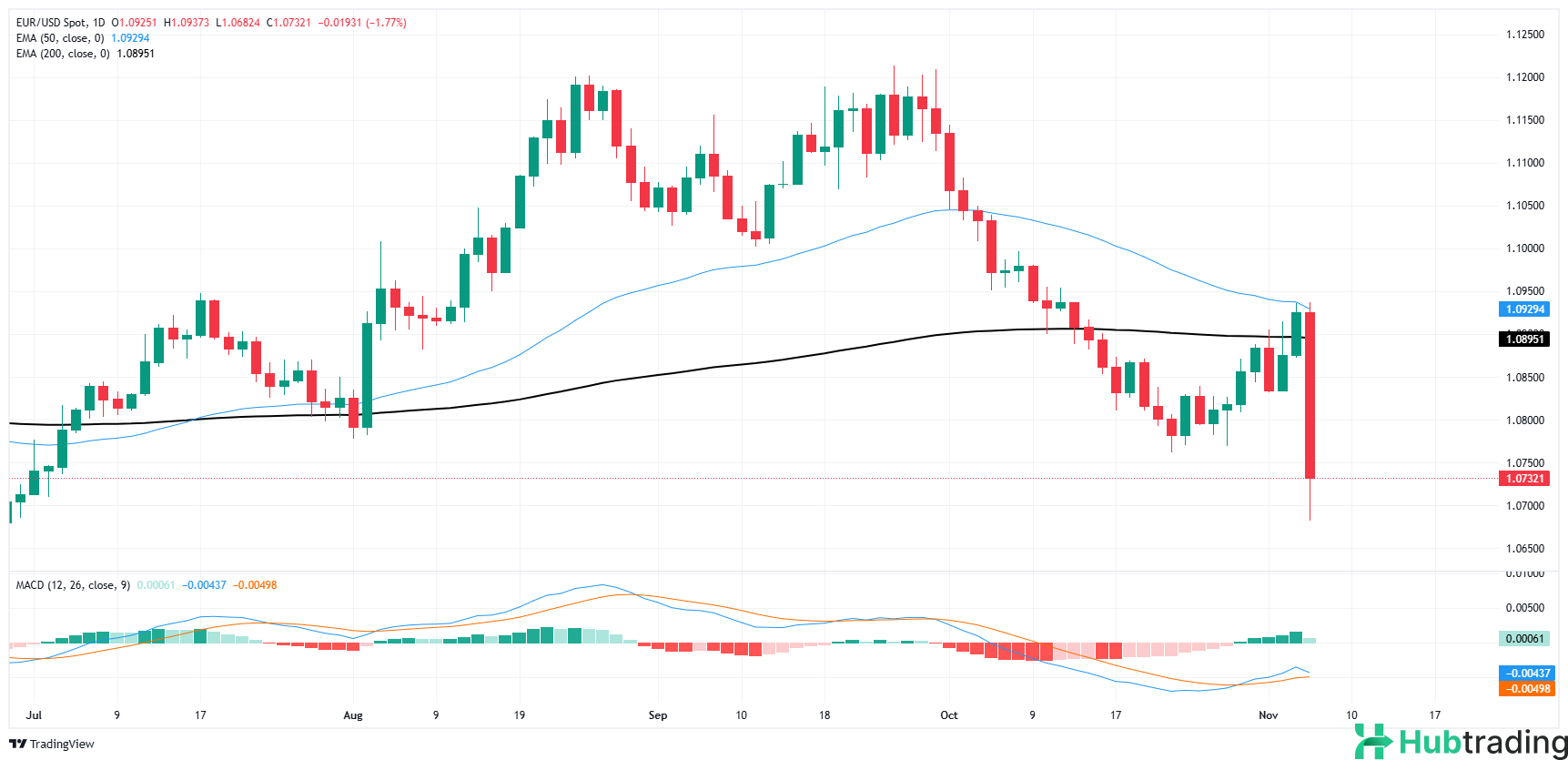- EUR/USD tumbled almost 2% on Wednesday as the US Dollar soared.
- The Euro had one of its worst trading days in years, with markets struggling to find any bullish catalysts.
- With a lackluster EU economic calendar, attention now shifts to expectations for future Fed rate cuts.
EUR/USD saw a sharp decline during Wednesday's trading session, dropping more than 1.75% and falling back below the 1.0750 level for the first time since July. The US Dollar surged across the board following this week's US presidential election results, with former President Donald Trump emerging as the clear frontrunner.
European economic data remains sparse this week, with Pan-European Retail Sales figures set for release on Thursday. The EU leaders' summit concludes on Friday, followed by a scheduled appearance from ECB President Lagarde on Saturday, when markets will be closed.
While the US presidential election is still ongoing in some battleground states, markets have largely priced in a victory for Trump, who is set to win 276 electoral votes. The Republicans are also on track to regain control of both the US Senate and Congress, which has led investors to anticipate a pro-growth, deregulation-friendly environment, along with extended business tax cuts.
Fed Rate Decision and Economic Data:
A key event for markets this week is the Federal Reserve's expected rate cut. Fed Chair Jerome Powell is widely anticipated to announce a 25 basis point reduction in interest rates on Thursday, bringing the Fed Funds Rate down to 4.75%. The Fed's rate hike cycle peaked at 5.5% in July 2023, and investors are hoping for a return to a low-rate environment similar to the one seen after the global financial crisis.
On Friday, the University of Michigan's Consumer Sentiment Index will also be released, with expectations for November’s reading to rise to a six-month high of 71.0, up from 70.5 in October.
Technical Outlook:
The EUR/USD daily chart shows a significant pullback as the pair was rejected around the 50-day EMA, which is currently at 1.0929. The pair has since dropped below both the 50-day and 200-day EMAs, signaling a bearish shift in sentiment. This technical setback is compounded by ongoing concerns over the eurozone’s economic outlook, including slowing growth and inflation.
The latest trading session saw a strong bearish candlestick, indicating that market caution has returned as the euro struggles to maintain momentum above critical technical levels.
The MACD line is currently above the signal line, but recent weakness has caused the histogram bars to shrink, suggesting a loss of upward momentum. The MACD’s proximity to the zero line points to a potential shift in sentiment. A move into negative territory for the MACD could signal further downside for EUR/USD.
Support and Resistance Levels:
Looking ahead, the 1.0700 level is a key psychological support area to watch. If EUR/USD holds above this level, it could lead to a period of consolidation while markets digest broader economic and policy developments. A break below 1.0700 would likely intensify selling pressure, with the pair potentially heading towards the year’s lows near 1.0600, especially if economic conditions in the eurozone remain weak.
For a bullish reversal, EUR/USD would need to reclaim the 1.0900 level and sustain buying interest, signaling a shift in market sentiment toward the euro. Until then, the outlook remains cautious, with downside risks dominating the technical picture.
EUR/USD Daily Chart






